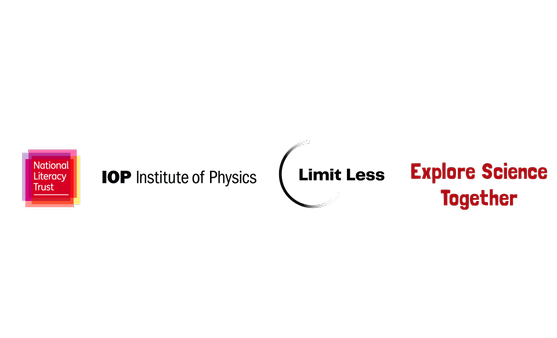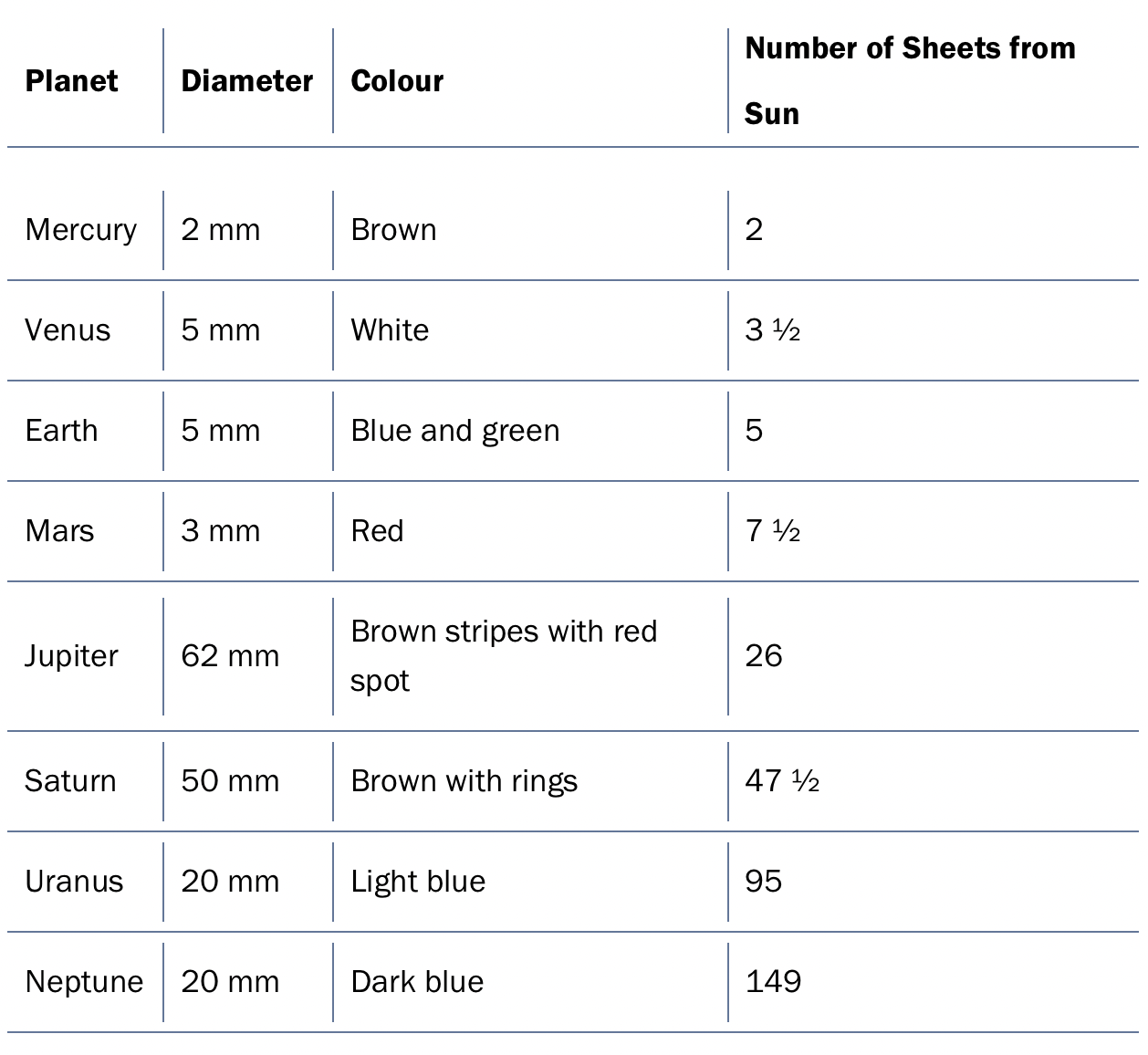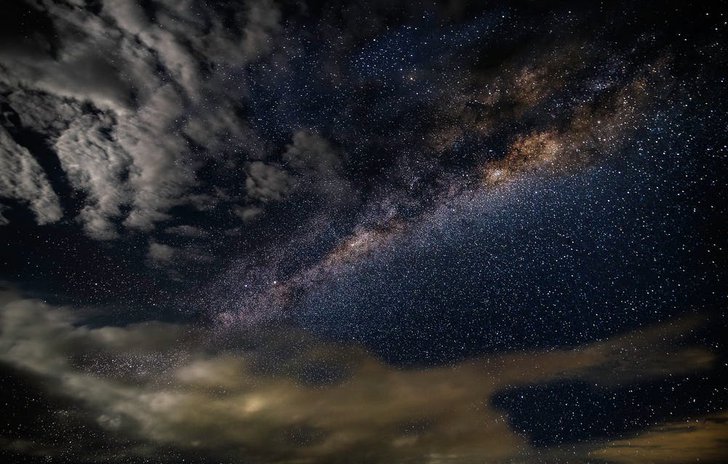
We've teamed up with the Institute of Physics to help overcome the stereotypes that surround learning about physics and to encourage parents to become great role models for this subject to inspire children to enjoy learning more about science.
For many children, understanding the order, size and distance between the planets can be challenging. Especially when they are on a scale hard for humans to fathom. We want to help your child understand the Solar System we call home with this fun and educational craft activity.
What you will need
- A fresh roll of toilet paper with at least 150 sheets
- Felt tip pens or colouring pencils
- Ruler
- 6 sheets of A4 Paper
- List of planet sizes and distances (below)
To build your solar system
This activity takes you and your child on a 4.5 billion kilometre journey all the way from the Sun to Neptune and cleverly fits them all into a single toilet roll. However, at this scale, many of the planets would be too small to draw, therefore, to make it easier for you – we have made all the planets 100 times larger than they should be at this scale.
a) Create your oversized sun by sticking together the six A4 sheets to make a 60cm square. Then, draw a circle within the square which measures 60cm across.
b) To make your planets, use the cut-offs of the paper square to avoid wastage. Use the size and colour guide below to create a model of each planet.

c) Now that you have created a model of each planet, you are going to start placing them along the toilet roll at the distance stated in the guide above. Start by placing the Sun at the edge of the loo roll. This marks the start of your Solar System.
b) Next, unroll the loo roll and stick down Mercury at the right distance from the Sun according to the guide. In this case, it is 2 sheets.
c) Do the same for all the other planets. Remember to keep track of how far you’ve gone to keep your model accurate!
d) Roll up your Solar System and treasure it forever.
To help you with your craft, follow along with this video.
Whilst you are crafting
Why not ask your child these questions to start a conversation with them about the Solar System and boost their knowledge and vocabulary?
- We’ve gone as far as Neptune. Have you heard of anything further away?
- Do you have a favourite planet? Why is that?
A guide to your Solar System
The Sun
- At the middle of the Solar System is our Sun, a very ordinary star about halfway through its lifetime. The Sun accounts for 99.8% of all of the mass in the Solar System. But the Solar System is so much more than the central star. It has planets, dwarf planets (such as Pluto), loads of moons and millions of asteroids, comets and more. So let’s head out:
Mercury
- Mercury is the first and smallest of the planets. It’s just bigger than our Moon and covered in craters.
Venus
- Venus is next. It’s another rocky planet with a thick poisonous atmosphere – temperatures here can reach over 470 0 C, which is about the temperature of a pizza oven.
Earth
- Third rock from the Sun, our home. The Earth is a little bit bigger than Venus and we’re just far enough away from the Sun for water to be a liquid.
Mars
- Moving on to Mars – the final rocky planet. It’s about half as wide as the Earth and it’s the next place that we humans would like to visit. On average it’s a chilly -63 0C with ice caps made of solid carbon dioxide.
- Leaving these small inner planets behind, we travel though the asteroid belt. This is a lot of space rubble – we know of nearly one million asteroids and they range in size from tiny to hundreds of miles across!
Jupiter
- The next planet is Jupiter. The first of the gas giants, and it really is giant – over 11 times as wide as the Earth and has a mass that’s 2.5 times that of all of the other planets put together!
Saturn
- Moving on again we have another gas giant, Saturn, the second largest planet in the Solar System – the lord of the rings. It isn’t the only planet to have rings, but it definitely has the most beautiful ones, made from chunks of ice and rock.
- Six planets down and two to go. These final outer planets are called that for a reason. It took the Voyager spacecraft five years to travel this distance.
Uranus
- Uranus is a type of planet called an ice giant and it was the first planet to be discovered using a telescope. It’s sometimes called the sideways planet, because instead of its North and South poles pointing “up” and “down”, one points towards the Sun and one points away.
Neptune
- Neptune, the last planet in the Solar System, is about the same size as Uranus. It’s another ice giant surrounded by supersonic winds, Neptune has only travelled around the Sun once since it was discovered back in 1846!
Beyond the planets
- The Solar System doesn’t stop there. Up next is the Kuiper belt, an outer asteroid belt, filled with icy space debris. Even if you haven’t heard of it, you will have heard of the most famous denizen of the Kuiper belt, the dwarf planet Pluto.
- Finally, we have the Oort cloud, which astronomers have predicted, but nobody has actually seen. We think these far away reaches of the Solar System are home to icy lumps of rock that stretch out a quarter of the way to the next closest star, over 3,000 times further from the Sun than Neptune.
Looking for an activity to do next?
The planets in this model are 100 times too big for the toilet paper. Why not create one to scale by going for a 2km walk or bike ride? Here’s what to do:
- Make an extra set of planets exactly the same size as above
- Start at your house or a local landmark
- Plan your route using the Solar System Model Map
Enjoyed this activity? Why not try out some of the other Do Try This at Home activities created by the Institute of Physics.
